Question
Which of the following statements is/are true?
Study the following information carefully and answer the given questions: There are eight persons i.e. A, B, C, D, E, F, G and H are sitting in a linear row. All of them are facing in the north direction. Only one person sits between H and A who sits third from the one of the ends of the row. D sits to the immediate left of H. F sits third to the left of G. F does not sit at the end of the row. More than three persons sit between B and A. C sits three places away from G.Solution
STEP I: Only one person sits between H and A who sits third from the one of the ends of the row. As per this statement, there will be four possible cases and the arrangement will look like this: 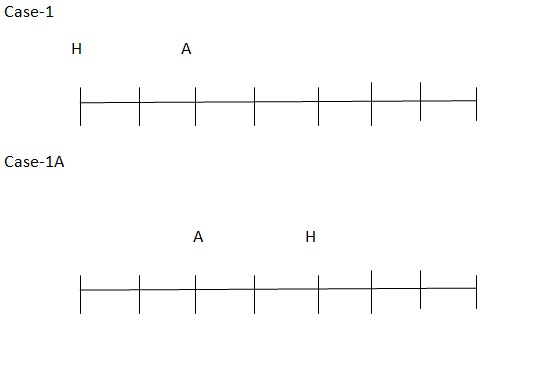 Case-2
Case-2 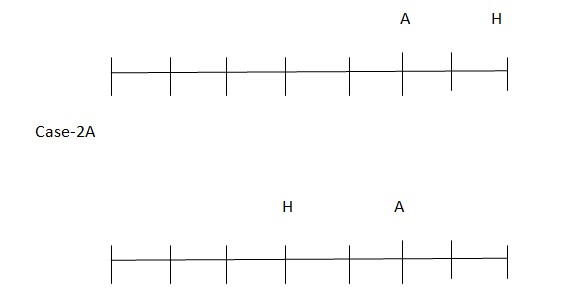 STEP II: D sits to the immediate left of H. As per this statement, CASE I will get eliminated and we will continue with CASE I (A), CASE II and CASE II (A) and the arrangement will look like this:
STEP II: D sits to the immediate left of H. As per this statement, CASE I will get eliminated and we will continue with CASE I (A), CASE II and CASE II (A) and the arrangement will look like this: 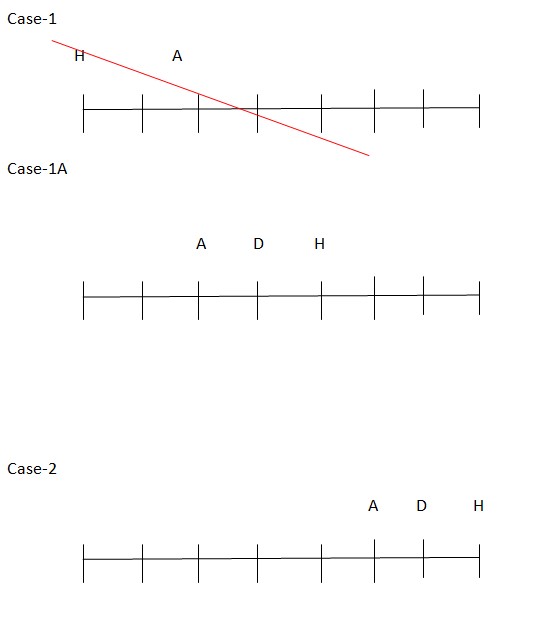
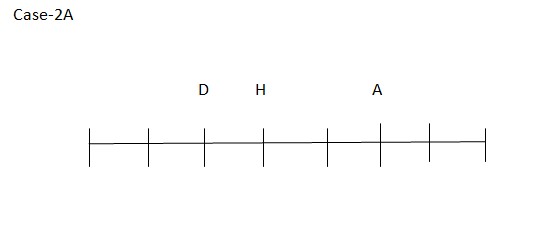 STEP III: F sits third to the left of G. F does not sit at the end of the row. As per this statement, CASE I (A) will get eliminated and we will continue with CASE II and CASE II (A) and the arrangement will look like this:
STEP III: F sits third to the left of G. F does not sit at the end of the row. As per this statement, CASE I (A) will get eliminated and we will continue with CASE II and CASE II (A) and the arrangement will look like this: 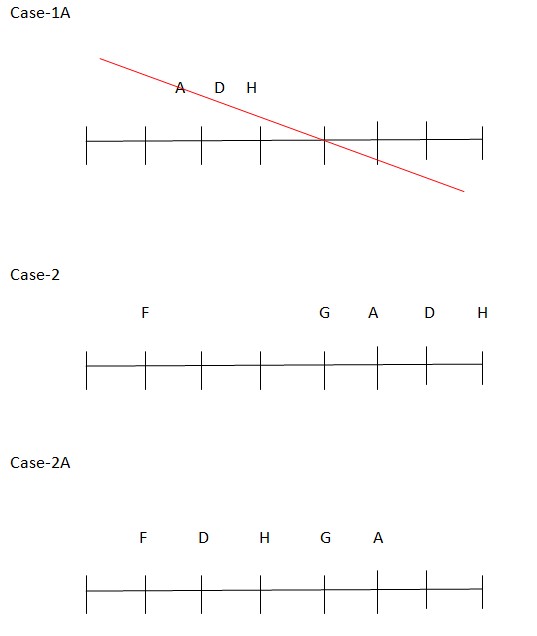 STEP IV: C sits three places away from G.Asperthisstatement, CASEII willgeteliminatedandwewillcontinuewith CASEII(A) andthe arrangementwilllook like this:
STEP IV: C sits three places away from G.Asperthisstatement, CASEII willgeteliminatedandwewillcontinuewith CASEII(A) andthe arrangementwilllook like this: 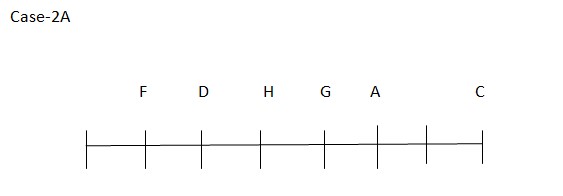 STEP V: More than three persons sit between B and A. As per this statement, the final arrangement will look like this:
STEP V: More than three persons sit between B and A. As per this statement, the final arrangement will look like this: 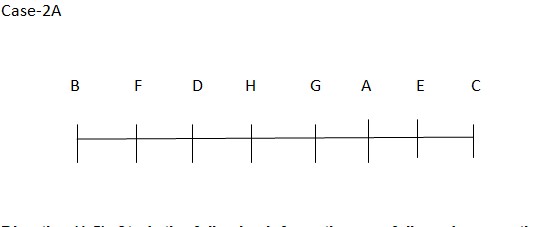
Airbnb will invest $100mn inIndian hotel startup OYO. . Airbnb deals in Which service ?
What percentage of the full-year target did the fiscal deficit touch for the April-December period of FY24, according to data by the Controller General ...
In which of the following years was the ‘Project Elephant’ launched by the Government of India?
Which Indian state achieved the first rank in the composite SDG Index according to the Baseline Report released by NITI Aayog?
Which vitamin is crucial for facilitating calcium absorption in animals?
Which substance changes the rate of chemical reactions and remains chemically different during reaction?
DB Insurance, formerly known as Dongbu Insurance, is an insurance company providing automobile, health, pension, and life insurance. Which country is it...
Which tournament is the world’s oldest and most prestigious badminton championship?
Which of the following is the largest cultivable valley in the Himalayas ?
Which metro has become first ever to receive power generated from a waste to energy plant?
Relevant for Exams:


